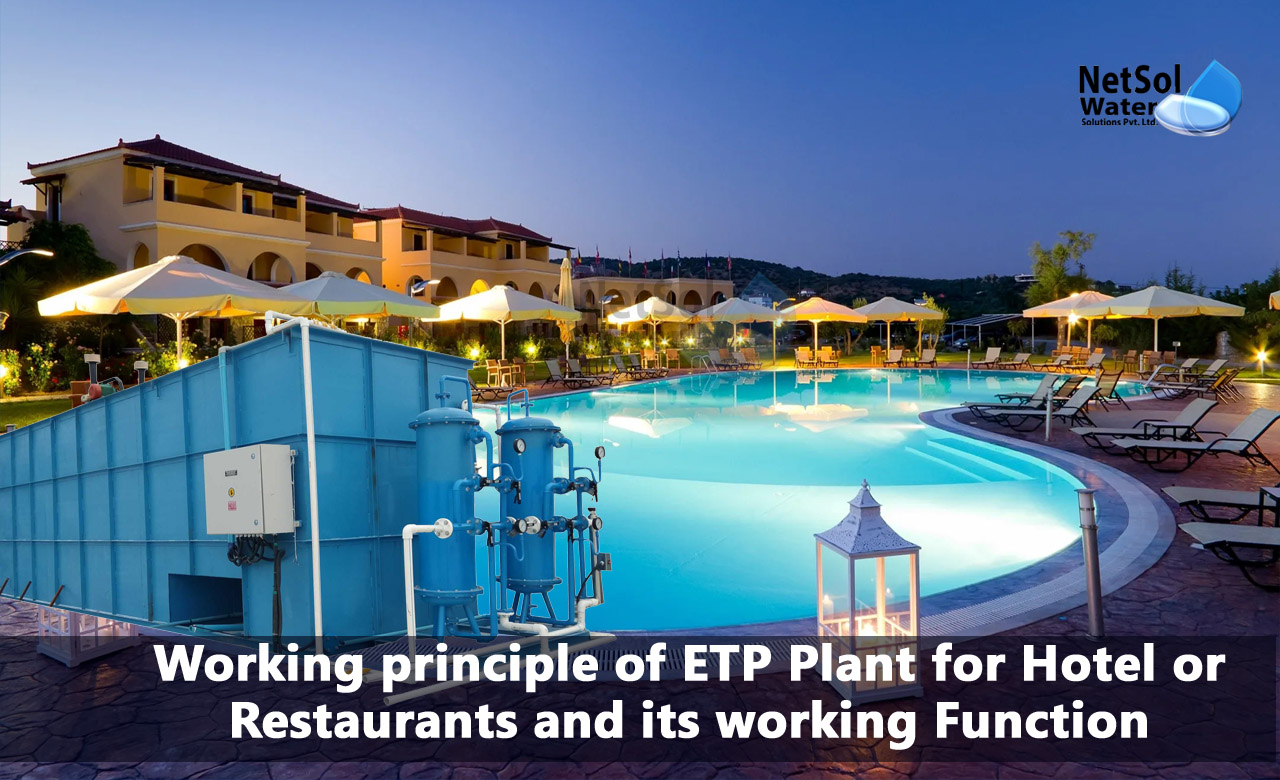What is the working principle of ETP Plant for Hotel or Restaurants?
Effluent Treatment Plant (ETP) is a crucial process for any Hotel/Restaurant that aims to minimize its environmental impact by treating wastewater generated during its operations.
In this blog, we will discuss the working principle of Effluent Treatment Plant for Hotel/ Restaurants ETP working Function in Details with Process flow diagram and drawing in detail.
The working principle of ETP can be divided into three stages:
- Pre-treatment
- Primary Treatment
- Secondary Treatment
- Tertiary Treatment
1. Pre-treatment: The pre-treatment stage is the first stage of ETP, where the wastewater is collected from the different sources of Hotel/ Restaurants, such as kitchen, laundry, and toilet. The wastewater is then screened to remove large solid particles, such as plastic, paper, and food waste, using a bar screen or a mechanical screen.
After screening, the wastewater is sent to a grit chamber, where the suspended solids like sand, gravel, and other heavy particles are removed by settling. The grit is then removed from the bottom of the chamber using a scraper and sent for disposal.
- Primary Treatment: In the primary treatment stage, the wastewater is sent to a primary sedimentation tank, where the remaining suspended solids and organic matter are removed by settling. The tank is designed to allow the wastewater to remain still for some time, allowing the solids to settle to the bottom.
The settled solids, called sludge, are removed from the bottom of the tank and sent to a sludge treatment facility. The treated wastewater, called effluent, is then sent to the next stage of treatment.
- Secondary Treatment: In the secondary treatment stage, the effluent is sent to an aeration tank, where the organic matter is broken down by microorganisms through a process called biological oxidation. The microorganisms are added to the tank using an aeration system that provides air to support the growth of bacteria.
The effluent is then sent to a secondary sedimentation tank, where the remaining solids and microorganisms settle to the bottom. The settled sludge is removed and sent to a sludge treatment facility.
4. Tertiary Treatment: This level of treatment is also called as disinfection treatment. The treated effluent is then sent for disinfection using chlorine or ultraviolet light to kill any remaining pathogens. After disinfection, the effluent is discharged into a receiving water body or reused for non-potable purposes.
Process flow diagram and drawing:
A typical process flow diagram for an ETP system in a Hotel/Restaurant is shown below:

Conclusion:
Effluent Treatment Plant (ETP) is a crucial process for any Hotel/Restaurant that aims to minimize its environmental impact. The ETP system involves several stages, including pre-treatment, primary treatment, and secondary treatment. The treated effluent is then discharged into a receiving water body or reused for non-potable purposes. The process flow diagram and drawing provide an overview of the ETP system's components and the various stages involved in the treatment process.
Call Netsol water solutions at +91-9650608473 or send an email to enquiry@netsolwater.com to know more.



